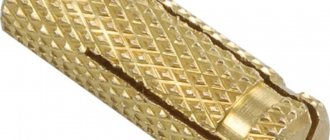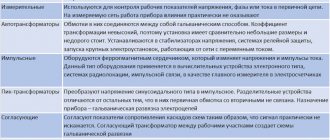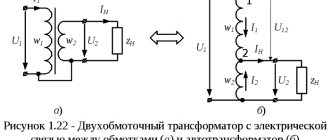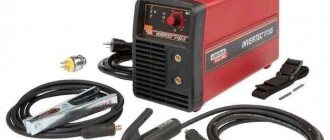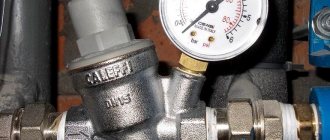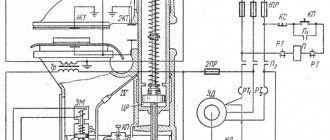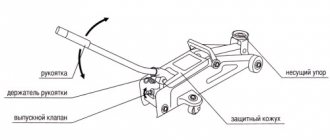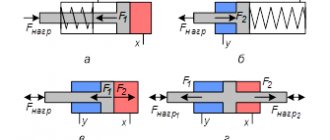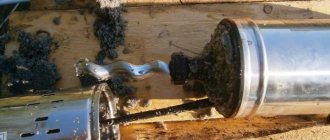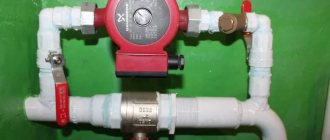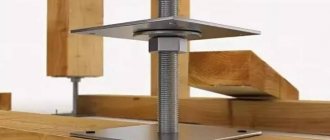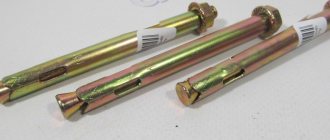The drive-in anchor can withstand very high static loads for a long time and is optimal for installation in solid foundations made of concrete, brick or stone. Its design includes two bushings: one has grooves that ensure its deformation, and the second is a spacer part. For the manufacture of drive-in anchors, high-quality and corrosion-resistant metals are used: brass and stainless steel, steel alloys with anti-corrosion treatment. For stable fixation, the outer walls of the anchor are equipped with spikes.
Features of drive-in anchors
It’s worth starting with what distinguishes drive-in anchors from other tools for construction or repair. In other words, identify the features of this device.
The main difference between anchors and other fastening elements is the method of fastening.
- An unusual technology is used here, the essence of which is that the collet is not fixed in advance, but only at the moment when the rod element is driven into it.
- The very principle of attaching an anchor to a wall is not particularly technologically advanced and is based on the basic laws of physics studied at school.
- When a rod element is inserted into concrete or brick surfaces, the friction force acts quite strongly on the working fluid.
- Due to this, a special stop is triggered and the workpiece is secured.
Also, there are more equipped models with special fastenings. You won't have to strain too hard to attach the entire structure, just follow the instructions.
Permissible loads
Working loads of all types of anchor fasteners should be no more than 25% of the maximum pull-out load when used in concrete with a strength of 200-250 kgf/cm
2
(corresponds to concrete grades M200 and M250). As the strength of concrete increases, the recommended load of fasteners increases proportionally. If there are cracks in the concrete, the pull-out load is multiplied by a factor of 0.6.
Components of this device
When the features and operating principles of drive-in anchors have been described in general detail, it’s time to talk about what it consists of. Overall, the design is not that complicated. There are only two defining details.
The first is a kind of conical bushing. It is equipped with a thread on one side. The caliber of this thread varies depending on the size of the fastener and the materials used in manufacturing.
- On the reverse side of the bushing you can find a special split element.
- It is used to drive a driven anchor through concrete or brick material.
- The element may consist of two or four parts, depending on the size of your copy.
- The second defining detail is the wedge-cone. This element is installed inside the bushing.
- Its main function is to give and maintain a conical shape to the anchor as it penetrates the wall.
Installation
Installing these mounts is a simple task, but requires care. To successfully complete the task, it is recommended to follow the scheme:
- Creating a small hole that will fit the size of the rod. For these purposes, an ordinary drill is used. The diameter of the hole should be such that the part fits in tightly;
- Cleaning the resulting opening. It is necessary to remove dirt and construction dust. For greater efficiency, you can use a vacuum cleaner or a medical bulb;
- Installing an anchor inside the opening;
- Driving the propping striker into the anchor. Can be done with a regular hammer;
If everything is done correctly, the split part of the part will expand in the walls of the opening. When the wedged anchor is properly fixed in the opening, you can screw a pin or bolt inside it and begin fastening the required object.
Types of drive-in anchors
Such mounts have been produced for quite some time. It all started, of course, with the most ordinary models, which were limited only to performing their main function - securing.
Now the most technologically advanced specimens with wide functionality and a wide range of applications have appeared.
- Basically, the classification is based on the principle of material. They mainly produce steel, galvanized, electro-galvanized and brass models. The first type is the most common and basic. It is reliable and without any special features.
- Steel hammer anchors are produced in a very wide range and can be found in almost any hardware store. The only noticeable disadvantage is that some unscrupulous manufacturers neglect to treat the workpieces with anti-corrosion liquid.
- This leads to the fact that the fasteners can quickly rust and fail. To avoid this, you need to check this point with the seller at the hardware store.
Galvanized models are, in general, similar to classic metal drive-in anchors. The main differences lie mainly in appearance. The specimens in question are treated with a special galvanized coating at the production stage.
This provides a characteristic shine, resistance to corrosion and sudden changes in temperature parameters. If fastening is carried out outdoors, then you do not have to worry about sudden changes in temperature or changes in air humidity.
Galvanized drive-in anchors easily withstand all these external irritants.
An extreme, but no less interesting model that will be considered is brass drive-in anchors.
- Brass, in itself, is not a very popular material in construction and industry for a number of reasons related to its physical characteristics.
- However, this soft metal is ideal for making a variety of fastening materials.
- If you need anchors not for industrial purposes, but simply for domestic use, then brass models are what you need.
- The metal has a pleasant appearance, is not afraid of corrosion and weighs a little.
- The best option for inexperienced builders or those who simply need a set of fasteners for work in a house or apartment.
There are several more exotic types of drive-in anchors, but only those models that have been tested by time are presented.
How to properly secure a stud in concrete?
We are surrounded by hundreds of different materials, which from time to time have to be combined with each other. It is especially difficult to produce with those whose physical characteristics are completely different. In this article we will consider how to fix wood to concrete, in addition, we will touch on other materials. Any family expert will prove that most often during repair or construction it is necessary to combine timber and concrete. For example, to the foundation of a house when constructing a wooden building or when installing joists for a future floor, as well as performing work on cladding walls and ceilings. Everywhere we have to resolve one and the same problem - how to more reliably attach wood to concrete. How to attach timber to a foundation
Popular manufacturers
If you have already become familiar with the characteristics, design and types of drive-in anchors, it’s time to start thinking about a specific choice.
Anchors are produced by a lot of companies around the world, but it is important not to get confused in all this variety of products and choose the best quality.
Experienced buyers and experts in this field highlight the following list of leading companies from which you can safely purchase different types of drive-in anchors without worrying about quality and durability:
- German manufacturers Fischer. Everyone has probably heard about the famous German quality. The production of anchors is no exception. The above-mentioned company is the absolute leader in the market for these materials. The company has well-established logistics and delivery anywhere in the world. The only drawback is the high price for the CIS, but it is justified by the incredible quality.
- Mungo. A Swiss company that is also famous for its quality. Unfortunately, the company focuses on the production of other materials, so the circulation of drive-in anchors is very limited.
- Koelner. The European company producing this material is the closest to Russia. The quality of the product is also excellent, but the pricing policy is also quite affordable. This is the most acceptable option for ordinary builders or for basic repairs.
In land management
Anchor products made of plastic have found application in land management and are used to strengthen banks, construct road embankments and pipelines.
Fastening elements have increased impact resistance and frost resistance, and are able to withstand the effects of groundwater, hazardous chemicals and corrosion.
Plastic fasteners are T-shaped and range from 60 to 120 centimeters in length. When driving into the ground and installing the ATP clip, the fastening elements are connected by a polymer cable and form a three-dimensional geogrid.
